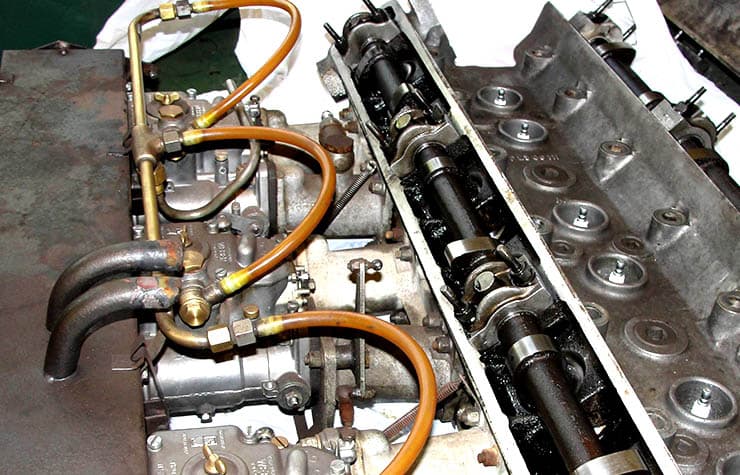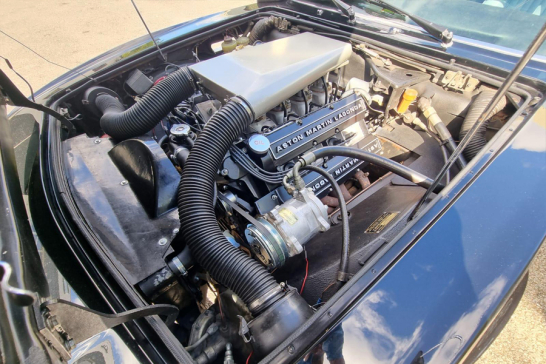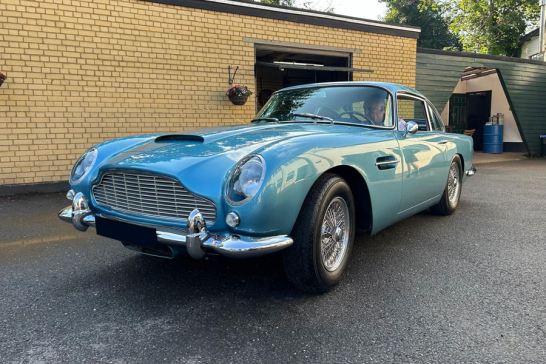Weber carburettors are considered to be the crowning glory on classic Aston Martins. Sure an SU is going to be easier to live with day to day, but you're always going to wonder what your car would be like with a better set of lungs. There's a cachet attached to Webers that others simply don't have.
Snap, Crackle and Pop
But you've probably also heard the horror stories about Weber-powered cars being an unruly handful when carrying out some of the more mundane tasks a carburettor has to take care of, such as driving in slow traffic.
Owners of Weber powered cars will know exactly what we're driving at. That is, of course, unless we've had our hands on them.
Before addressing that, we'll take a step back and outline what makes a Weber a Weber - and why people love and hate them in equal measure.

A True Racing Heritage
Weber's heritage is rooted in performance, and it's fair to say on a racetrack, with the accelerator wide open, a Weber carb is going to deliver.
With each cylinder being fed from a dedicated unit, getting a pump prime at the crucial moment, all helped by the famous secondary or auxiliary venturi, a well-configured Weber brings an engine to life like no other carb. They are simply fantastic.
They Don't Do Boring... Or Do They?
The problem was always their performance away from the track on a mundane drive around London, for example. In these situations, Weber's became all snap, crackle and pop, a frustrating and sometimes embarrassing experience for the driver. Not anymore.
That's because correctly setting up a Weber can deliver the driving experience usually only found with fuel injection systems. But what do we mean by correctly set-up?
The Dark Arts Explained
Tuning a Weber carb is a specialist operation because Weber's are complex pieces of engineering magic.
First of all, each cylinder has its own carburettor; there's no settings sharing going on. So effectively, in the right hands tuning a Weber involves making sure each cylinder is getting what it needs. In the case of most classic Aston Martins, that means there are six carbs to tune.
Let's Further Add To That Complexity
A Weber carb is a miniature rabbit warren of circuitry. First, there's an idle circuit that feeds the engine with fuel while it's ticking over. Next, the acceleration jet works with a small pump to send a stream of fuel into the inlet manifold when accelerating. Finally, the main circuit feeds the engine when the throttle's open. But, there's also the progression circuit, which is actually the same as the idle circuit. Wait, what?

Yes, that's correct; the circuit used to get fuel to the engine while it's ticking over is the same as the one used to feed the engine with fuel as it progresses from tick over to acceleration.
This is often the aspect of tuning a Weber that is thought of as black magic because it involves drilling holes of the right size and position into the carburettor!
It's Actually Way More Complex
Now, there's actually a whole lot more to the Weber carburettor, including jets, emulsion tubes, an auxiliary or secondary venturi, enrichment tubes, and the list goes on. The critical thing to know is that a Weber can be configured to deliver a best of both worlds driving experience in the right hands.
By that, we mean we're able to tune your Weber carbs so your car starts, runs and performs as you need it to no matter where you're driving.
Home Or Away, Your Weber Will Behave
Suppose you're enjoying a spirited drive away from the hustle and bustle of the city. In that case, you're going to get the performance you want. But what about the dreaded hack through traffic back to your garage? No problem.
Once we've tuned your Weber, it will feel like a fuel injection system, with smooth progression and no coughing and spluttering through traffic.
If your Weber has driven you to distraction, pun intended, call us to chat about how we can tame it.




